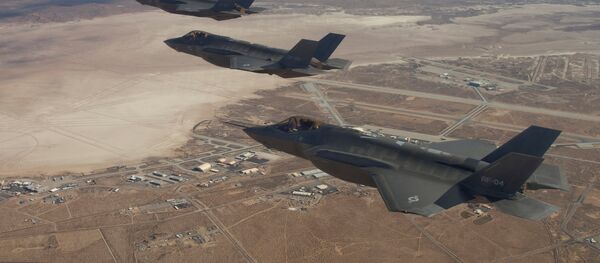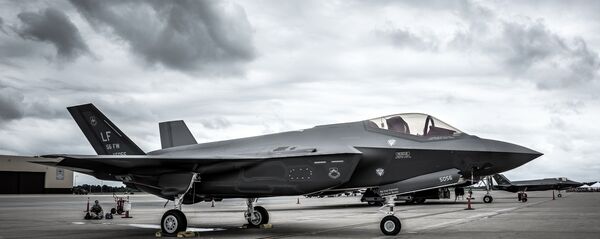"F-35 aircraft were unable to fly nearly 30% of the May-November 2018 time period due to spare parts shortages," according to an April report by the Government Accountability Office (GAO). The report further notes that during that time, the Pentagon "had a repair backlog of about 4,300 F-35 parts."
"While DoD is taking various actions to improve F-35 spare parts availability so that aircraft can fly and perform their missions, it will likely continue to struggle to meet warfighter requirements — due to how it is planning for and allocating spare parts," the report stated.
Further, the report finds that only 27% of all F-35 aircraft were fully mission capable (FMC) during that time, with roughly half of the total F-35 fleet being considered mission capable (MC), meaning they can at least perform their core functions.
That's far below the Defense Department's expectations of the complex aircraft, which set the goal of reaching an 80 percent FMC rate by the end of fiscal year 2019.
There are three types of F-35s built by Lockheed Martin: the F-35A, the first and most basic version, is designed to operate from standard airfields for the US Air Force; the F-35B, made for the US Marine Corps, can take off and land vertically; and the F-35C has special features enabling it to operate from the US Navy's aircraft carriers. They've also been developed at different speeds, with the F-35B entering service in 2015, the A model in 2016, and the F-35C only being declared ready for action in March 2019, Sputnik reported.
Obtaining parts for three types of aircraft is hard, but the problem has been amplified by all the different modifications made to them over the years. The GAO report highlights this fact, noting that there are "at least 39 different part combinations across the more than 350 F-35As, F-35Bs, and F-35Cs that have been fielded."
As a result, the FMC rate for each model is vastly different as well. The F-35A is only fully mission capable 34% of the time, and the F-35B is only fully mission capable 16% of the time. The F-35C, however, lags far behind even those low numbers, being fully capable of everything required of it on the battlefield only 2% of the time, according to the GAO.
Following release of the damning report, Lockheed Martin promised to step up its game in the spare parts department.
"Lockheed Martin is taking aggressive action to build supply chain capacity, reduce supply chain costs and improve part availability to help drive sustainment costs down while enhancing readiness," Lockheed said in a statement.
"The F-35 global supply chain is a key enabler to success, and Lockheed Martin has and continues to conduct supply chain competitions, restructure supplier contracts, build supply chain capacity, synchronize spare buys, improve parts reliability and maintainability, implement advanced analytics tools, accelerate modifications to earlier aircraft, and support the stand-up of government-led regional warehouses and repair depots," the company said.
Increasing the stealth aircraft's availability will be essential if the Pentagon ever hopes to deploy the F-35 in its anticipated "quarterback" role in a future conflict with China over the South China Sea, where Washington has promised to deploy F-35s to counter Beijing's comparable J-20 stealth aircraft.
"If you don't push back it'll keep coming," Commander of Pacific Air Forces Gen. Charles Brown told Bloomberg earlier this week, noting that Beijing planned to send the fifth-generation Chengdu J-20 and Shenyang J-31 stealth aircraft to the contested sea basin. The J-31 is expected to become the mainstay of China's burgeoning naval aviation fleet, making it not unlike the F-35C, and the J-20 is considered a rough counterpart to the F-22 Raptor, the Joint Strike Fighter's slightly older cousin.
All in all, the Pentagon expects to acquire 1,763 F-35As, 420 F-35Bs, and 273 F-35Cs. Numerous other countries are also buying various F-35 models, including Israel, the UK and Japan. According to a recent cost revision, the total F-35 program is expected to top $1.5 trillion, Sputnik reported.





